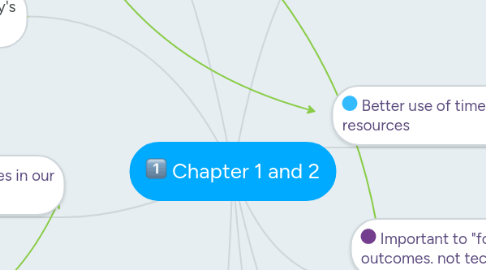Chapter 1 and 2
by Jenifer Pickens


1. Blended Learning is about seamlessly connecting technology to our everyday lives to "create an optimal experience"
1.1. Using the best of on and off site
1.2. Optimizing "efficiency, convenience, and learning outcomes"
2. Changes in our world
2.1. Analog to digital
2.2. tethered to mobile
2.3. isolated to connected
2.4. generic to personal
2.5. consuming to creating
2.6. closed to open
3. Shift is today's learners
3.1. Digital natives
3.2. Go to Internet before teachers of texts
3.3. As much as 80% of our learning happens outside the classroom
4. Blended Courses Improve Learning
4.1. Improved instructional design
4.2. Increased guidance and trigger
4.3. Easier access to learning activities
4.4. Increased engagement through social interaction
4.5. time on task increased
4.6. Individualized learning oppertunities
4.7. Provide both synchronous and asynchronous interations
5. Important to "focus on learning outcomes. not technology"
5.1. Do not use technology for technologies sake
5.2. "technology is simply a tool"
6. Should be a "intentional course redesign process"
6.1. "Learning outcomes for a blended course are identical to those of the onsite version.
6.2. Use of LMS, Web 2.0 or other Web-based tools to enhance learning platforms
7. Better use of time and resources
7.1. Travel time saved can be used for instruction
7.1.1. learning time does not automatically translate to more learning
